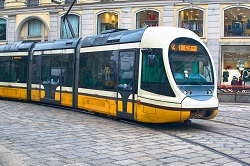Putting the info into urban mobility
Infomobility is where big data and everyday travel converge. The concept involves the use and distribution of dynamic and selected multi-modal information to end users – both before and during a trip – with the goal of creating more efficient and higher-quality transport systems. For European cities, the concept has huge potential for helping them achieve their mobility and Smart City objectives. And although both the transport systems and the big data exists, the challenge is bringing the two together. The aim of the EU-funded PETRA project was to connect these dots by developing a service platform for connecting providers and controllers of urban transport with travellers. The resulting platform fuses different data from various city sources, travel operators and citizens, performs a broad class of predictive analytics, detects real time events and provides information services to transportation service providers and city stakeholders, allowing them to optimise their transport offerings according to citizen needs. ‘With PETRA, cities received an integrated platform to enable the provision of citizen-centric, demand-adaptive city-wide transportation services,’ says project coordinator Sebastiaan Meijer. ‘At the same time, travellers get mobile applications that empower them in making travel priorities and choices for route and modality.’ Clearing up the uncertainty The PETRA project successfully achieved a handful of important milestones. For example, it made significant technological advances in providing travel advice during times of uncertainty. ‘Capturing urban dynamics requires that data formats are simple yet complete enough to annotate uncertainty in a way that preserves the fine-grained detail required for travel advice,’ explains Meijer. ‘Here we developed a method for obtaining better uncertainty, predominantly for public transport modes, that was robust for the messy data situation that is typical for realistic city contexts.’ Meijer adds that while this method requires further advances to be demonstrated, it is simple enough to be used and applied widely. Benefiting from the experts Another important achievement was the development of methodologies and tools to capture city expertise in formal and managerial formats. ‘The involvement of cities and their stakeholders in constructing and managing an infomobility platform opens the door for using their expertise in constructive manners – something that isn’t possible when aiming for a generic solution for all cities,’ says Meijer. ‘It is a well-known fact that city professionals know urban dynamics very well and activate this knowledge when managing disruptions and events, and we wanted to be sure to capture and incorporate this knowledge into our platform.’ In Venice, for example, a simulation model was developed to capture pedestrian dynamics based on the lowest number of modelling assumptions possible. Using the insight of city professionals, this model evolved into a city-wide simulation capturing the city’s busiest tourist hotspots. Parameterisation of the model was done based on available static data, and full validation was done by local experts. ‘Since these experts were well-positioned to predict the dynamics on busy, normal and calm days regarding queueing and crowds at major points of interest, the simulation produced baseline data files for the travel advisory platform,’ says Meijer. ‘With these baselines, and a file that Venice policy makers make every year that predicts which days will be busy, normal or calm, in Venice the PETRA platform can provide dynamic advise based on expert judgement of what the situation will be.’ Bringing tech and management together With the project now concluded, researchers are working with various European cities to help integrate PETRA’s findings into their infomobility strategies. Furthermore, it is expected that some of the technical infrastructures developed within the project will form the basis of various spin-off projects – further strengthening the project’s impact. ‘From the start, our goal was to generate new knowledge and methods to further develop the role of cities in infomobility,’ says Meijer. ‘The PETRA platform is the integration object that brings technology and management together into demonstrable synergy.’
Keywords
PETRA, ICT, Smart Cities, Infomobility, public transportation







